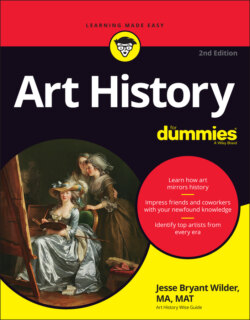Читать книгу Art History For Dummies - Jesse Bryant Wilder - Страница 53
Moving Off the Rails in the 20th Century
ОглавлениеThe rapid social and political changes of the 20th century and the inventions that sped up and improved global communication — radio, cinema, the airplane, television, transistors and on and on — triggered a plethora of art movements that responded in a variety of ways to those changes. Here are examples:
Einstein’s Theory of Relativity and Freud’s and Jung’s theories about the unconscious helped define Cubism, Futurism, and Surrealism.
Ghastly world wars caused many artists to react intensely and creatively. The first, called the Great War, because its scale was unimaginable until WWII, spurred the Dada movement and Modernism. It also motivated Expressionists like Kirchner, Heckel, Kollwitz, Otto Dix, and others to make anti-war art.
The rise of communism and fascist movements in the wake of WWI — and the subsequent horrors they unleashed before, during, and after WWII — affected the art of Surrealists such as Joan Miró and René Magritte and post-war art from Abstract Expressionism to Pop Art.
The Viet Nam War helped to spawn ’60s protest art in America and elsewhere.
The women’s movement, as well as civil rights, anti-war, and environmental movements of the ’50s and ’60s, also fostered and helped shape activist art movements in those decades and beyond.
The gay rights movement of the ’70s and ’80s spawned a new wave of protest art.
